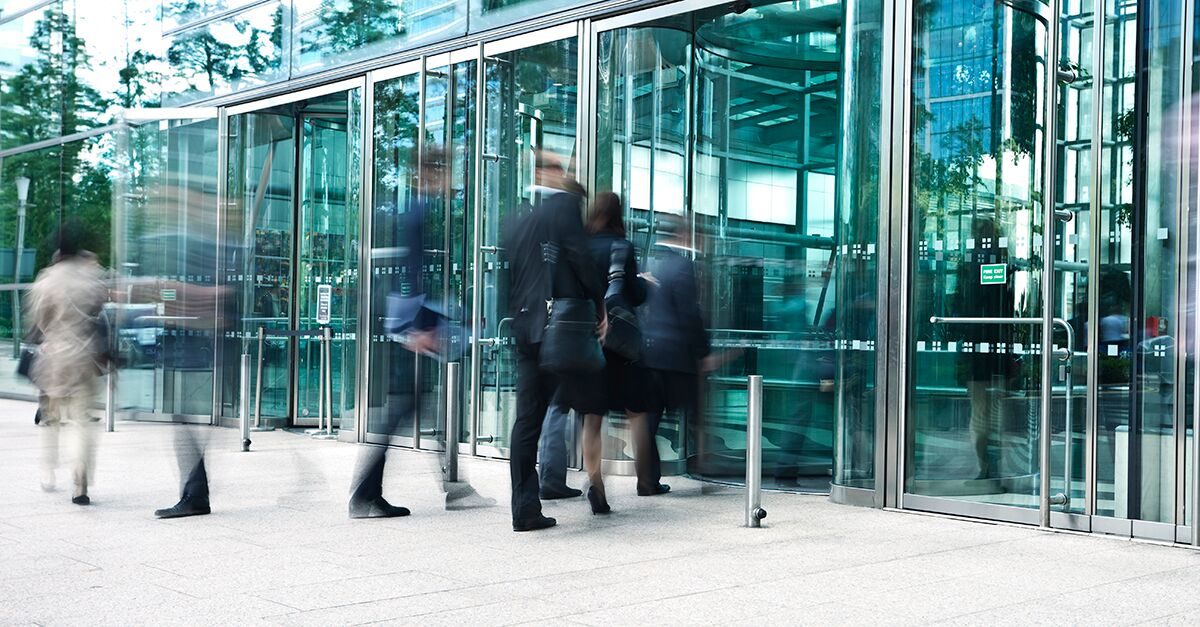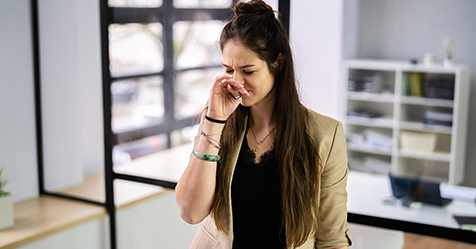Air pollution is known to cause a number of health problems, such as respiratory diseases, allergies, even lung cancer. And while you may assume you aren’t exposed to air pollution when indoors, estimates suggest the air inside homes, schools, offices, and other facilities can be two to five times more polluted than outdoor air. When you imagine a smokestack churning out black plumes into an otherwise blue sky, you realize what an alarming estimate that is, particularly considering that you spend the vast majority of your day indoors.
To improve your building’s air quality, it’s important to first understand the sources of indoor air pollution, which are wide-ranging and come from both inside and outside the building. Within a building, sources include emissions from building materials, HVAC equipment, furnishings, and office products; dust or debris within air ducts and on surfaces; mold in water-damaged materials; and VOCs from paint, adhesives, and chalk. Exterior sources include pollen, street dust, pesticides, chemicals, oil, dirt, and debris that can easily make their way inside a building by hitching a ride on the shoes of unsuspecting occupants and visitors.
There is one often overlooked yet easy-to-implement solution for addressing the exterior sources of indoor air pollution—a proper entrance matting system. By scraping and brushing away dust, dirt, and debris and absorbing moisture effectively, a properly installed matting system can stop the vast majority of exterior sources of indoor air pollution at the door, preventing them from making their way into your building and adversely impacting indoor air quality.
“Consider this,” says Barbara Grundman, Marketing manager at Dalco Enterprises, a distributor of cleaning industry equipment and supplies. “BST Laboratory conducted field tests on matting and found that every 1,000 people track one-quarter of a pound of dirt into a commercial building during dry conditions and 12 times that amount in wet weather. Without an entrance matting system, all that dirt would make its way into your building—and into the air you, your employees, and your visitors are breathing.”
When establishing a proper entrance matting system, there are four key considerations: materials selection, length, placement, and care.
Materials
The most effective entrance matting systems consist of a variety of products that each have a specific job to do, such as foot grilles and surface matting, but simultaneously work together to remove pollutants from shoes.
A foot grille removes and captures debris to prevent it from entering a building. There are various types of foot grilles, such as the following:
- A heavy-gauge, deep-recessed foot grille with blades that scrape dirt and debris from the soles of shoes and deposit them below
- A dual-track foot grille that alternates rails with course-textured fiber to remove debris while also absorbing moisture, chemicals, or pesticides
- A surface mounted alternative, such as a vinyl grille with fiber strips for moisture removal and scraping bars with space to capture debris.
Surface matting plays an equally important role as a foot grille in keeping pollutants out of your building. Surface matting made from 100% nylon fibers provides mildew-resistant moisture absorption, providing a line of defense against chemicals and pesticides. Due to the rigidity of the fibers, matting made from 100 percent polypropylene removes any remaining small dirt and debris particles, trapping them below the surface and within the fibers to prevent them from entering your building.
Length
The length of your entrance matting has a significant impact on how much dust, dirt, debris, and moisture does or does not enter your building. When determining how much matting is right for your building, consider how much foot traffic your entrance receives, your typical weather conditions, and if your building is located in an area that generates high levels of dust, dirt, or debris, such as a near a beach or on a busy highway.
The Carpet and Rug Institute suggests a minimal matting length of nine to 15 feet based on the premise that 80% of soil and moisture can be removed in the first five or six steps a person takes. But based on its own studies, ISSA, the worldwide cleaning industry association, recommends a minimum of 30 linear feet of matting. More specifically, its studies found that five feet of matting removes approximately 37% of debris from shoes; 10 feet removes 52% of debris; 15 feet removes 71% of debris; 20 feet removes 86% of debris; and 30 feet removes 100% of debris, eliminating those exterior sources of indoor air pollution from entering your building.
You may also consider looking at the interior end of your entrance matting. If there is dirt, debris, or moisture therewith the prescribed routine cleaning, the length of your matting is insufficient.
Placement
There are essentially three zones to your building’s entrance, each with different matting requirements. Ensuring you use the right type and length of matting in the right zone is a key component to creating a proper system to effectively reduce or eliminate the amount of pollutants that enter your building. Follow this guide to creating your zones:
- Zone No.1: The first zone is the exterior surface immediately in front of your building’s doors. This zone requires aggressive scraping to prevent larger particles of dirt and debris from entering your building. If your entry has an overhang, a six-to 10-foot slip-resistant foot grille works well. If your entry does not have an overhang, you may want to use a vinyl scraper mat here.
- Zone No. 2: The second zone is the vestibule between your exterior and interior doors. Here you need to continue to remove debris but also absorb moisture, so a dual-track deep recessed foot grille that alternates rails with course-textured drying inserts is ideal. Here, length is dependent on the amount of space you have between doors.
- Zone No. 3: The third zone is your lobby. The type of matting you use here will depend on if you need more debris removal or moisture absorption. The length of your lobby matting also depends on a number of factors. First, look at how much matting you already have in your first and second zones and work to achieve 30 total linear feet, which should include your lobby matting. Second, consider your traffic patterns and how much matting you need to provide maximum safety and floor protection.
Short-and Long-Term Care
Your matting does a spectacular job at removing and trapping dust, dirt, debris and moisture, but leaving those pollutants in the matting allows it to break loose and make its way into your building, essentially negating the benefits of having matting in the first place. For this reason, implementing a regular matting maintenance program is critical to maintaining and improving your indoor air quality.
Task No. 1: First and foremost, vacuum daily to remove the dust, dirt, and debris from the surface of your matting and get it out of your building all together. In particular, use a vacuum cleaner with a HEPA filter. Because of its design, a HEPA filter can trap microscopic particles such as pollen, street dust, and fine sand, removing these known pollutants and allergens from surfaces as well as the air. If you are conducting daytime cleaning, you may also want to invest in a vacuum that operates at a lower decibel level to reduce the noise pollution it emits.
Task No. 2: While your matting traps much of the dust, dirt, and debris entering your building, some of it can migrate beneath the matting. For this reason, in addition to vacuuming the matting itself, remove any surface matting and vacuum beneath and around it.
Task No. 3: Beyond daily vacuuming, implement biweekly, weekly, or monthly hot water extraction, particularly during heavy weather events or when snow melt or salt are in use. This provides a deeper level of cleaning that helps remove spots and stains and does a more thorough job of removing trapped fine dirt and pollutants from your matting. Dalco’s Grundman notes that while installing a proper entrance matting system may sound expensive and regular preventive maintenance may sound labor-intensive, they save money in the long run. “It’s been said that US$1 spent keeping soil out of a building saves $10 dollars in removing that soil once it’s inside the building.” On top of that, it will improve your indoor air quality and overall building health.




